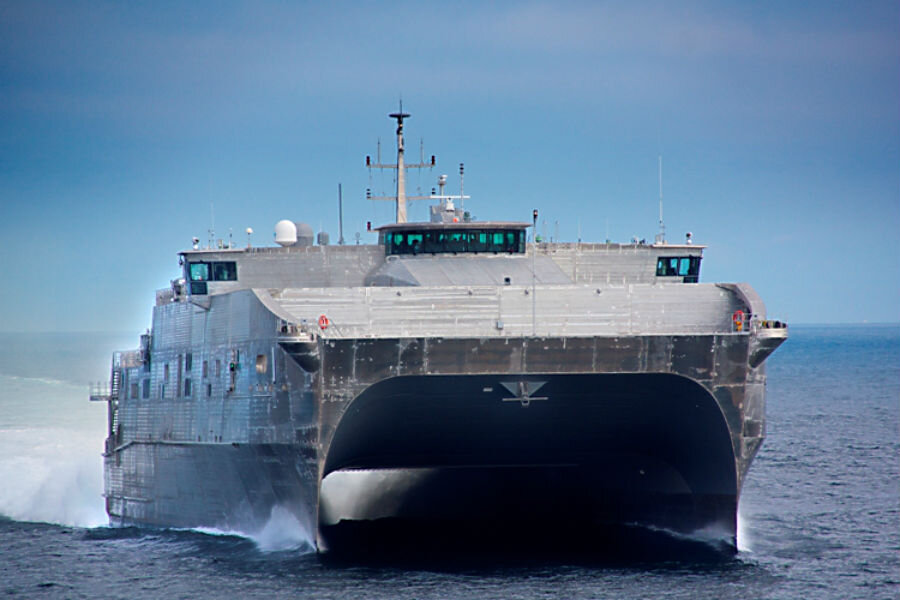Is the US Navy building ships that can't weather rough seas?
Loading...
The United States Navy will have to shoulder the repair costs for a new class of its ships after discovering that their bows can’t withstand heavy ocean waves, according to Bloomberg.
The Navy’s new Expeditionary Fast Transports (EPF) fleet will have to undergo maintenance to repair damages sustained by some of their structures and to reinforce the vessels’ bows. Four of five currently operational ships have been mended so far, while the other five remain under construction in an Alabama shipyard.
“The Navy accepted compromises in the bow structure, presumable to save weight, during the building of these ships,” said J. Michael Gilmore, director of the Department of Defense Operational Test & Evaluation, in a September report.
“Multiple ships of the class have suffered damage to the bow structure, and repairs/reinforcements are in progress class-wide,” he wrote.
The aluminum EPF ships, developed for a total cost of $2.1 billion by Australian shipbuilder Austal Ltd., all share the same structural flaw after Austal’s design recommendation to the Navy weakened the ships’ bows. So far, $2.4 million has been spent on strengthening the bows and more than $4 million on repairs. Even with the additional support, though, the Navy is still unsure if the repairs will be enough to keep the ships’ frameworks intact.
“Since the repairs are still in progress, there has been no heavy weather testing yet to verify if the fixes are sufficient,” Marine Corps Maj. Adrian Rankine-Galloway told Bloomberg.
Despite the setbacks, the ordering of an 11th fleet vessel was approved for the Navy through the 2016 Consolidated Appropriations Act at a cost of $225 million.
The Navy is currently charting its course for another ship model with potential design problems, the Zumwalt-class destroyer. Construction of more than 30 of the advanced Zumwalt class were originally planned, but it is likely that after years of research and ballooning costs only three will ever be completed. The reason: the spiraling costs, and concern that the ships would not be stable in heavy ocean waves.
“On the DDG-1000 [The first completed Zumwalt-class ship], with the waves coming at you from behind, when a ship pitches down, it can lose transverse stability as the stern comes out of the water – and basically roll over,” civilian architect Ken Brower in 2007, told Wired.
While the Navy hopes to improve the EPF fleet’s integrity, the construction adds nearly one ton of weight to each ship causing the displacement of around 250 gallons of fuel. Gilmore said the change should not affect the ships’ travel ranges, but said in his report that their routes and speeds may still have to be altered to avoid damage.
“Operating the ship outside of the SOE (Safe Operating Envelope) or encountering a rogue wave that is outside of the current sea state can result in sea slam events that cause structural damage to the bow structure of the ship,” Gilmore wrote. “The operational restriction of the SOE is a major limitation of the ship class that must be factored into all missions.”







